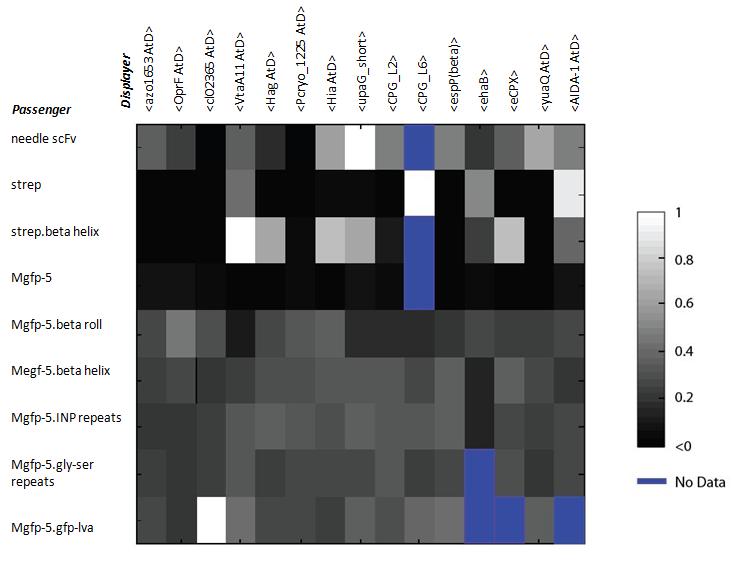Team:Berkeley Wetlab/Conclusions
From 2009.igem.org
JCAnderson (Talk | contribs) (→Conclusions) |
|||
| Line 3: | Line 3: | ||
=== Conclusions === | === Conclusions === | ||
| - | This year we set out to lay down fundamental design principles for surface display systems. To accomplish this, automation enabled a systematic approach to finding optimal combinations of passengers, displayers and spacer elements. Several characteristic passengers (described in previous sections) varying in size and function were examined to give a clearer picture of the spectrum of functional display systems achievable with our approach. The results of our investigations support the idea that more complex | + | This year we set out to lay down fundamental design principles for surface display systems. To accomplish this, automation enabled a systematic approach to finding optimal combinations of passengers, displayers and spacer elements. Several characteristic passengers (described in previous sections) varying in size and function were examined to give a clearer picture of the spectrum of functional display systems achievable with our approach. The results of our investigations support the idea that more complex passengers are much more difficult to display than simpler ones. Additionally, the inclusion of spacer elements appears to enhance display of passengers to a large degree. Finally, it is interesting to note that although one displayer may be ideal for the functional display of one passenger, it is not necessarily the best display system for all passengers. This makes it increasingly helpful to have a systematic approach to find the best displayer-spacer match for the passenger of interest. |
== Heat Map == | == Heat Map == | ||
Revision as of 17:48, 21 October 2009
Conclusions
This year we set out to lay down fundamental design principles for surface display systems. To accomplish this, automation enabled a systematic approach to finding optimal combinations of passengers, displayers and spacer elements. Several characteristic passengers (described in previous sections) varying in size and function were examined to give a clearer picture of the spectrum of functional display systems achievable with our approach. The results of our investigations support the idea that more complex passengers are much more difficult to display than simpler ones. Additionally, the inclusion of spacer elements appears to enhance display of passengers to a large degree. Finally, it is interesting to note that although one displayer may be ideal for the functional display of one passenger, it is not necessarily the best display system for all passengers. This makes it increasingly helpful to have a systematic approach to find the best displayer-spacer match for the passenger of interest.
Heat Map
Following completion of functional assays of the passenger-display systems, each quantitative data set was normalized to an appropriate control. The heat map below compiles this data, enabling further analysis of the display systems. For each passenger system, the constructs with the highest signal of functionality were assigned a value of one (white), whereas those with insignificant deviance from the control were approximately zero (black).

The heat map above points to an interesting trend made clear by the streptavidin and mgfp-5 data. The inclusion of spacer elements for both systems appears to enhance functional surface display of the passengers. There is an increase in functional display when the beta roll spacer is added between the displayers and the strep tag as is seen in the increase in lighter blocks in the map. This trend is especially evident in the mgfp data in which there are several weak signals (many dark blocks in the map) for mgfp displayed on its own. With the addition of several spacer elements, a significant general increase in signal for almost 100% of the systems is observed.
- run through
 "
"






